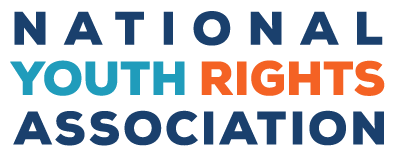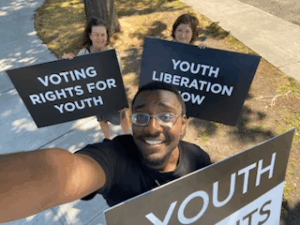This essay is about age-based curfew laws, a proposal that they should be abolished. I even unleashed the full power of Mike Males (who is, as you may know, a sociologist) and his coauthored study on the effectiveness in age-based curfews. Also doubleplusungood.
Age-based curfew laws in the United States should be abolished.
There is no question that the intent of curfews—to reduce crime and protect potential victims of crime—is a noble one, but there is serious evidence that curfew laws are largely ineffective, even counterproductive, in fulfilling this goal. In addition, enforcement of curfews often disproportionately targets people in poorer areas and minorities. Curfew laws also set a dangerous precedent for government involvement in the lives of private citizens and their families.
One possible perspective on curfew laws is their effects on the rights of young people and their families. Teenagers and young children are recognized as citizens by the Fourteenth Amendment, which states that “All persons born or naturalized in the United States, and subject to the jurisdiction thereof, are citizens of the United States and of the State wherein they reside. No State shall make or enforce any law which shall abridge the privileges or immunities of citizens of the United States; nor shall any State deprive any person of life, liberty, or property, without due process of law; nor deny to any person within its jurisdiction the equal protection of the laws.” (Constitution) Although freedom of mobility is not explicitly guaranteed in the Constitution, the fact that that freedom is restricted through incarceration for people convicted of crimes indicates that it is a freedom generally recognized by society, and the Ninth Amendment (“The enumeration in the Constitution, of certain rights, shall not be construed to deny or disparage others retained by the people”) has been used to guarantee other rights not written out in the Constitution, such as the right to privacy and the right to non-verbal symbolic expression. This right to free mobility is denied to young people by curfew laws, even when their maturity, life experience, size, and all other relevant factors are such that their age warrants no special treatment, as is the case for seventeen-year-olds the day before their eighteenth birthday, for example. It seems it would be difficult to justify arresting young people merely for being in public at certain times as a fulfillment of the constitutional mandate to “secure the Blessings of Liberty to ourselves and our Posterity.”
Another right traditionally recognized by common law and the courts is the right to parent children without needless governmental intrusion, especially when this parenting is both done by a fit parent and in the best interests of the teenager or child in question. Usually when there is a conflict with these parents’ rights, youth rights, and government, the conflict is between the parents and the youth; but when the parents and the young person are in agreement, the government’s only justification for intervening is when a truly criminal act is involved. It is one thing if the government steps in because the parent is allowing the young person to steal, for example, or perhaps do drugs, but the parent’s choice to allow the young person to be in public at certain times of the day is hardly a reason to abrogate parental rights.
Another perspective on the constitutionality of age-based curfew laws is to view the Constitution and its amendments as documents whose primary purpose is not to delineate the rights granted to citizens, but to detail in what situations and in what ways the government may exercise its power, particularly to limit how the government may intervene when citizens are exercising natural, not government-given, rights (“life, liberty, and property”). Seen in this light, the danger of curfew laws is that they set a disturbing precedent for the use—and abuse—of government authority. If the government has so much power that it can arrest people for the crime of being out at certain times of day, that it can arbitrarily deprive an entire segment of the population of the ability to legally walk down the sidewalk without a conviction or trial or hearing or even a charge of criminality, what power doesn’t the government have? If the government can literally place an entire group of people under house (or school) arrest without due process of law on the assumption that if any member of that group is not in some institution or under the supervision of parent or state, even with parental permission, that parent must be “up to no good,” what can the government not do?
The system of precedent on which the American legal system is based means that “foot-in-the-door” thinking is not entirely inappropriate. Indeed, historical evidence (curfews for black people before the Civil War, curfews for Japanese-Americans during World War II, curfews for women of any age) suggests that minority-directed curfew laws have not only been directed at age minorities, but racial and gender minorities as well, so the question of “who’s next? Blacks? Latinos? Women?” deserves a great deal of thought.
The great amount of discretion afforded police means that even age-based curfews may become thinly disguised race-ethnicity-based curfews in the wrong hands. One study examined curfew arrest rates, broken down by race-ethnicity as well as by age, and concluded that
Four large counties displayed a racial bias in curfew enforcement. In Los Angeles County authorities arrest Latino and African-American youth for curfew violations at rates two to three times that of white youth. In Ventura County, curfew arrests of Latino and African-American youths are 8.4 and 7.4 times higher, respectively than those of white youths. In Fresno and Santa Clara counties, Latino youth are five times, and African-American youth, three times, more likely to be arrested for curfew violations. (Males, Marcallair)
One co-author of the study, Mike A. Males, elaborates in his book Framing Youth: Ten Myths About the Next Generation about one case study examined, Monrovia, California:
The first question was who was getting curfewed. Monrovia, like most California cities of any size, is stratified. The uphill, northern part is affluent and nearly all white; family incomes top $50,000. The southern part is mostly Latino and black; one-third of the kids live in poverty. The high school sits in the middle. After school, masses of white kids drive north and masses of dark kids walk south. As a practical matter, youths who walk are more likely to be arrested for curfew than youths who drive, making curfews inherently biased against poorer teens.
Prior to the 1980s, most of Monrovia’s 2,500 teens were white; now, 55 percent are nonwhite. I found that black and Latino youths were slapped with 70 percent of the curfew citations, a rate nearly double that of whites. Even more troubling, nonwhites were 40 percent more likely than whites to be curfewed even after each racial group’s overall crime rate was factored out. After the curfew took effect, more than half of all offenses committed by nonwhite youths were curfew violations. That is, the curfew doubled the black and Latino youth ‘crime rate.’ (72)
Are age-based curfew laws even effective? Do they actually reduce youth crime rates or protect young people from violent crime? The answer, according to a California-based curfew study for the Center on Juvenile and Criminal Justice in San Francisco, is a resounding no.
The researchers studied cities and counties in California with curfews, and compared juvenile crime rates after the curfew with juvenile crime rates before the curfew, juvenile crime rates in cities and counties with less curfew enforcement, and adult crime rates after the curfew. The study examined arrest and crime rates from 1978 to 1996 for the entire state, also focusing on the twelve most populous counties and twenty-one cities with a population over 100,000. The study also compared youth violent death rates in order to examine the “protection” justification. ::::This study found that youth curfews do not reduce youth crime. This was true for any race of youth, for any region, for any type of crime. In those few instances in which a significant effect on youth crime was found, curfews were more likely to be associated with an increase in youth crime (not including curfew citations).
For the entire state of California there was no category of crime (misdemeanors, violent crime, property crime, etc.) which significantly declined in association with youth curfews. However, a significant increase in youth misdemeanors was associated with youth curfews. (Males, Macallair)
When reduction of youth crime and protection of youth are both factored out of the decision to support curfews, the justifications become rather weak.
An article in the Herald News explains about a Paterson, New Jersey, curfew vote: “Curfew proponents, including 2nd Ward Councilman Aslon Goow Sr., said they were pleased to see that voters agreed that something had to be done about the kids who congregate in public areas throughout the evening.” (“Paterson…”)
Congregating? Or peaceably assembling? Even when curfew laws specifically state “exercise of First Amendment rights” as a valid reason for being out past curfew, while also providing that police officers have to make sure that the person being arrested for violating curfew had no acceptable excuse, police officers ignore the First Amendment as much as Goow does. I asked a police officer I know whether she would arrest someone who was exercising his or her right to peaceably assemble for violating curfew, and she said yes. She adamantly stuck to that answer even after I pointed out that the law itself states that she had no basis to arrest that person (Hough).
Other arguments lack rationality. While New York City Councilman Dennis Gallagher may “wonder what good can happen to a child alone on the streets of New York at 2 in the morning,” and say that “no one’s been able to give me a good answer on that,” (“Overnight…”) other people can think of plenty of good reasons to be out past the curfew (which affects every teenager as well as every “child”):
So, thanks to this curfew, you can’t go to midnight mass. You can’t see a late movie. You can’t go to a concert at Miller’s or just sit in [the] Mudhouse and play chess until closing. You can’t drive to 7-11 at 2:00am to get those Twinkies that you’re craving, or even take a walk around your block. All of these things are illegal. (Charlottesville speech)
It is one thing for police to escort home a lost and disoriented eight-year-old (or, for that matter, a lost and disoriented eighteen, twenty-eight, or even eighty-year-old) and quite another to escort him or her to the police station in handcuffs to be booked for violating curfew. It is one thing to set a curfew for a convicted criminal on probation or parole, for the criminal’s sake and for society’s (the criminal has presumably already demonstrated a propensity for illegal behavior, so fears that late-night jaunts are on the wrong side of legality are not entirely groundless), but it is another entirely to keep someone with no criminal record from playing midnight basketball at the YMCA because of a nocturnal curfew or a homeschooler from engaging in community service or field trips to the park or art museum during school hours because of a daytime curfew.
Many opponents of curfew laws argue that police time is better spent stopping non-status-offense criminals, like murderers, rapists, and arsonists. Although it is probable that police departments in general do concentrate their energy on dangerous and violent felony crimes, the monetary cost of enforcing a curfew can be high. For example, the Cincinnati Post reported in March of 2000 that “Cincinnati is spending $168,000 each year to staff recreation centers at night to temporarily detain juveniles who break the city’s curfew,” which breaks down into an average of “about $800 per juvenile for violators detained last year [1999]” (Osborne). One hundred sixty eight thousand dollars from the taxpayers (both above and below eighteen) were spent because voters (all above eighteen) decided that keeping juveniles (all under eighteen) from merely being present in public was worth it.
Even without statistics and facts and figures, the arguments for curfews simply don’t make sense. For example, the argument that age-based curfews are justified because they somehow protect the young people affected from violent criminals don’t make sense on two separate grounds: first, there is no evidence that curfews do protect minors, and second, there is no reason to limit that protection to people below eighteen or to not apply that same protection to different groups who may be in more need of such protection. The idea that passing a law to “protect” a group of people by arresting them if they don’t “protect” themselves is ridiculous, and victims of domestic violence are probably safer outside their homes than in them.
If curfews are so effective in protecting people, why not pass curfews and other protective laws for other, equally vulnerable groups? Protection is the basis for laws mandating curfews for women, requiring male escorts for women in public, and requiring the use of veils and chadors to “protect” women from violence. Yet, in the United States at least, the most vociferous proponents of age-based curfews are strangely silent on the issue of legislating to reduce violence against women, though often forty-year-old housewives are arguably much more vulnerable to violent crime than seventeen-year-old teenage boys taking body-building.
In fact, curfews and other protective laws applied against people who are severely physically or mentally handicapped or ill, who are more likely to need protecting than the average fifteen-year-old, would likely meet instant opposition on grounds of discrimination, and the same discrimination arguments would be used if the idea that curfews are a tool to reduce crime is taken to the natural conclusion that groups with higher rates of crime, such as black people and (ironically) adults, should be subject to curfew.
On the other hand, if equality is upheld by “protecting” all people and stopping all criminals equally, the most logical step would be to create a universal curfew that would apply to people of all demographics. Perhaps a government passing such a law could be accused of achieving the equality a lawn mower imposes on grass, but at least it would be a fair and non-discriminatory government. How many voters professing protection for teenagers would cast their ballots in favor of a proposal to “protect” themselves equally? How many would stand by their principles and forgo the nonessential freedoms of late-night parties, romantic walks under the moonlight, even midnight trips to the corner drugstore, these (presumably) average law-abiding citizens bravely sacrificing their nighttimes in order that police might apprehend more dastardly insomniac evil-doers for the preservation of law, order, and the rights Americans hold dear? Very few, I suspect.
The constitutionality of age-based curfew laws are questionable, their success nonexistent, their enforcement often discriminatory, their logic confusing and their application expensive. Therefore, age-based curfew laws in the United States should be abolished.
Works Cited
“An overnight curfew for youngsters.” Staten Island Advance. 28 September 2004. 29 November 2005. Posted at http://www.youthrights.org/forums/showthread.php?t=1783&page=1&pp=20.
Charlottesville speech given by author of www.curfew.org. 29 November 2005 http://www.curfew.org/fight/speeches/charlottesville/
Constitution of the United States of America. 29 November 2005 www.house.us/constitution/constitution.html.
Hough, Karen. Personal Interview. 2005.
Males, Mike A. Framing Youth: Ten Myths About The Next Generation. Monroe, Maine: Common Courage Press, 1999.
—– and Dan Macallair. 1999. “An Analysis of Curfew Enforcement and Juvenile Crime in California.” Western Criminology Review 1 (2). [Online]. Available: http://wcr.sonoma.edu/v1n2/males.html. Also available, including press release and executive summary, at www.cjcj.org.
Osborne, Kevin. “Youth curfew costs city $168,000.” 25 March 2000. Cincinnati Post. 29 November 2005 http://www.cincypost.com/news/2000/curfew032500.html.
“Paterson curfew flies with voters.” Salazar Christian. Herald News. 29 November 2005 http://www.bergen.com/page.php?qstr=eXJpcnk3ZjczN2Y3dnFlZUVFeXk2MDcmZmdiZWw3Zjd2cWVlRUV5eTY4MTMzNzImeXJpcnk3ZjcxN2Y3dnFlZUVFeXkz.






i think that the curfew laws are cruel. i was out past my curfew one time and luckily no police were around. if they were i would have gotten fined. i think the curfew law should be lowered because it abolishes our freedom as teens to have fun and rights. it makes us feel left out and its stupid that we get in trouble for being a kid.